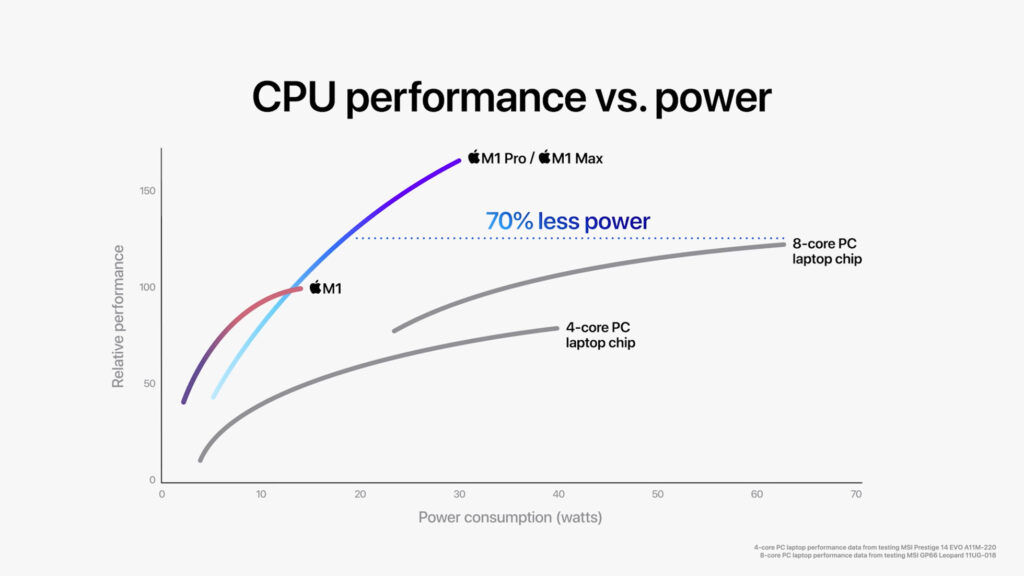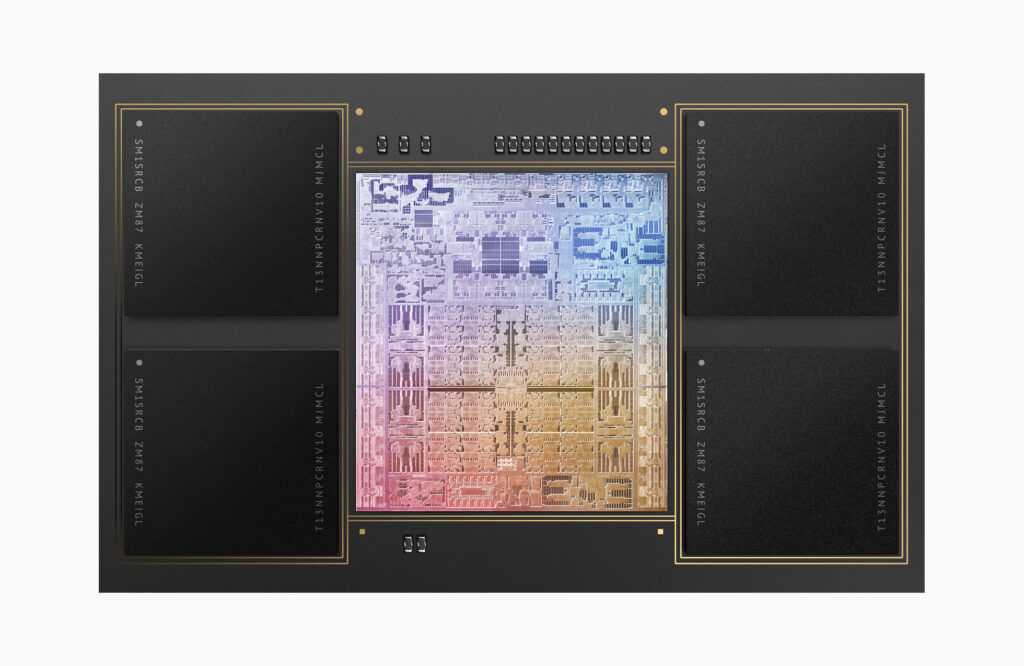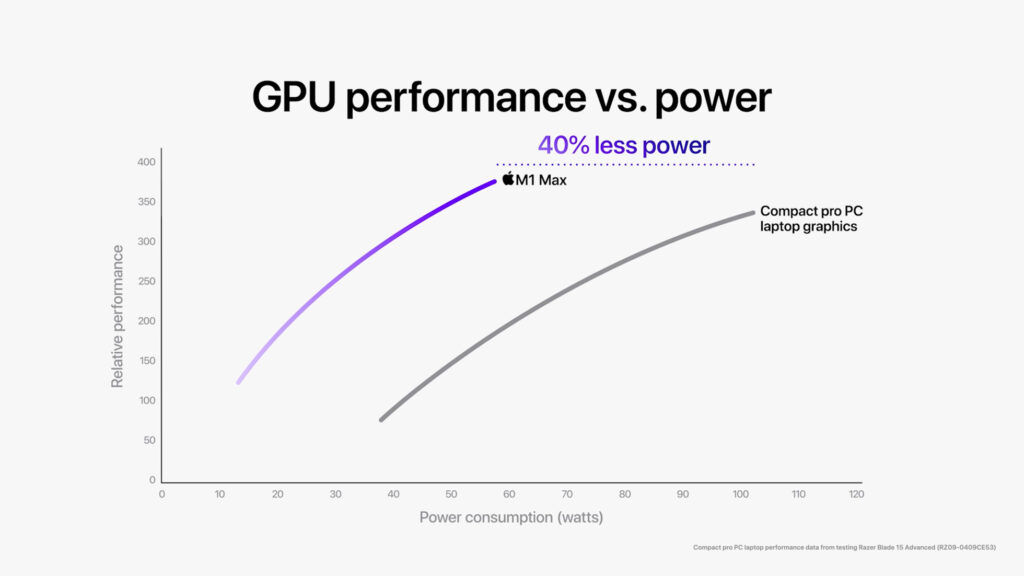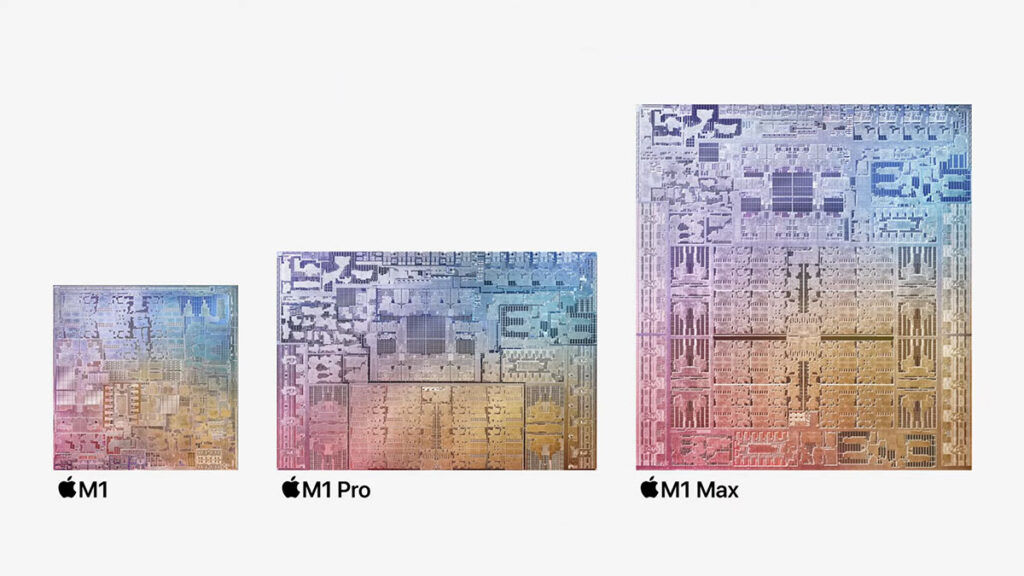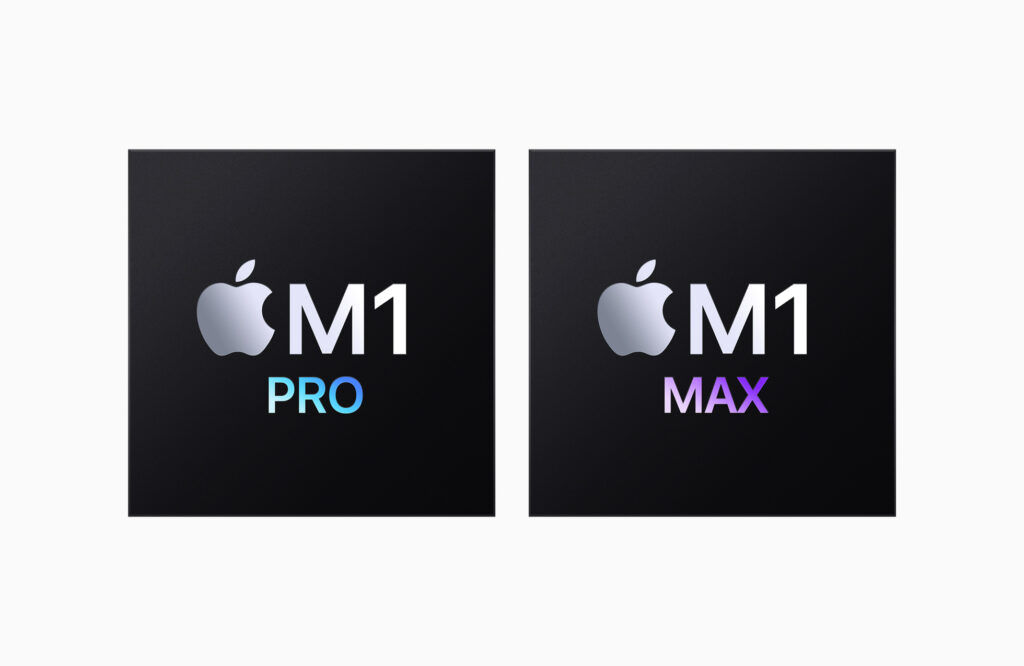The new M1 Pro, M1 Max SoCs makes the MacBook Pros faster than just about every laptop out there
The Apple M1 Pro and M1 Max definitely chart new ground for Apple, replacing even the high-performance Intel Core H-series processors in their larger MacBook Pro 16. And that’s just the CPU portion. Meanwhile, the GPU has to match the likes of the dedicated AMD Radeon Pro RX5000M series featured in last-gen MacBook Pros. With such a tall task on their hands, Apple definitely have to create absolute beasts with the M1 Pro and M1 Max. And they might have succeeded.
Apple M1 Pro, M1 Max: CPU
Apple redesigned the Apple M1 Pro and M1 Max with a focus on performance, with eight performance cores, versus the four in the Apple M1. The efficiency cores have been cut down to just two, but that’s probably not really much of an issue, as the M1 Pro and M1 Max are targeted towards full-fledged laptops.
The M1 Pro and M1 Max are the equivalent of the Apple M1, if it went to the gym and took steroids for breakfast, lunch and dinner. Apple decided to go for flat-out performance with these, instead of focusing on efficiency like with the original M1. It’s not to say that these new chips aren’t efficient, but they can draw up to twice the amount of power at 30W. When compared against the 11th Gen Intel Core i7-11800H, Apple is claiming that you are getting 1.7X the performance at the same power draw, which really a massive leap forward.
Apple M1 Pro, M1 Max: Memory
While the CPU configuration is pretty similar between the M1 Pro and M1 Max, it starts to differ when we get to the memory and GPU sections. When you are configuring your MacBook Pro, you might have noticed that the M1 Pro option can only be specced with up to 32GB RAM, while you can go up to 64GB with M1 Max. That’s because the M1 Pro has two 128-bit LPDDR5 memory controllers, for an effective 256-bit wide memory interface. Apple is promising up to 200GB/s of memory bandwidth with the Apple M1 Pro, which is nearly 4X higher than what you would get on the likes of the Core i7-11800H.
Meanwhile with the M1 Max, Apple doubled down on the memory bandwidth by doubling the memory controllers, with four 128-bit LPDDR5 memory controllers, making for a 512-bit wide memory bus with 400GB/s of memory bandwidth. That’s nearly as fast as the memory bandwidth in the PlayStation 5, which touts a maximum memory bandwidth of 448GB/s! And faster memory usually bodes well to improve graphics performance, which is what we will be looking at next.
Apple M1 Pro, M1 Max: Graphics
The 16-core GPU in the M1 Pro is claimed to achieve performance on par with the GeForce RTX 3050 Ti, while drawing 70% less power. Apple is pointing towards a 30W power draw in the graph, so it is unclear whether this is just the GPU drawing the full 30W, or the total SoC power. The M1 Pro’s GPU is capable of a 5.2TFLOPs.
Meanwhile, the M1 Max doubles the size of the GPU cluster, with 32 cores and 10.4TFLOPs of throughput. For this, Apple is gunning for the best mobile GPU in the market, the GeForce RTX 3080 Laptop GPU. With a power consumption of 60W, Apple claims that you are getting comparable performance at 100W less power consumption, which is really impressive. As compared to a GeForce RTX 3080 Laptop GPU with a 100W TDP limit, the M1 Max still draws 40% less power, while outperforming the NVIDIA GPU.
You can glean from this comparison of the M1 Pro and M1 Max, the M1 Max has grown quite significantly. While the CPU core count is the same, the number of GPU cores and memory controllers have doubled. The overall package size has nearly doubled as well, with the M1 Max being 1.7X the size of the M1 Pro, or a whopping 3.5X the size of the M1. The transistor count has also nearly doubled, going from 33.7 billion in the Apple M1 Pro to 57 billion in the M1 Max. To put these numbers into context, the Apple M1 comes in at 16 billion transistors, while a GeForce RTX 3090 packs 28.3 billion transistors.
Aside from the main parts, the M1 Pro and M1 Max also tout a 16-core Neural Engine for some impressive AI chops, as well as a media engine capable of hardware-accelerated ProRes encode and decode. The M1 Max has twice the video encode and ProRes encode/decode engines too, for even greater performance. The display support is slightly different between the M1 Pro and M1 Max too, with the former capable of supporting two, and the latter supporting four.
Apple M1 Pro, M1 Max Specs
[table]
| Apple M1 Pro | Apple M1 Max | |
| CPU | Up to 10-core, 8 performance + 2 efficiency
Available with 8-core, 6-performance + 2 efficiency option |
10-core, 8 performance + 2 efficiency |
| GPU | Up to 16-core, 2048 EU, 5.2TFLOPs
Available with 14-core, 1792 EU option |
Up to 32-core, 4096 EU, 10.4TFLOPs
Available with 24-core, 3072 EU option |
| Memory | Up to 32GB LPDDR5, 256-bit memory interface 200GB/s memory bandwidth |
Up to 64GB LPDDR5, 512-bit memory interface 400GB/s memory bandwidth |
| Neural Engine | 16-core, 11TOPs | 16-core, 11TOPs |
| Transistor count | 33.7 billion | 57 billion |
| Manufacturing process | 5nm TSMC | 5nm TSMC |
[/table]
The Apple M1 Pro and M1 Max are probably the most exciting processors to be launched this year, although the entry cost is definitely a bit steep, with the MacBook Pros being rather costly. However it does prove that Apple is ready to bring the fight to not just Intel and AMD, but also NVIDIA, with their custom GPU solutions. Obviously gaming isn’t going to be a priority, but with real-time raytracing being taken advantage of in creator applications as well, we might see Apple go down that route too with the next-gen Pro and Max chips.
Pokdepinion: I sure hope that the rest of the industry are spurred to improve their products by Apple. I know, it is weird, but the M1 series is definitely revolutionary in the proper sense of the word.







